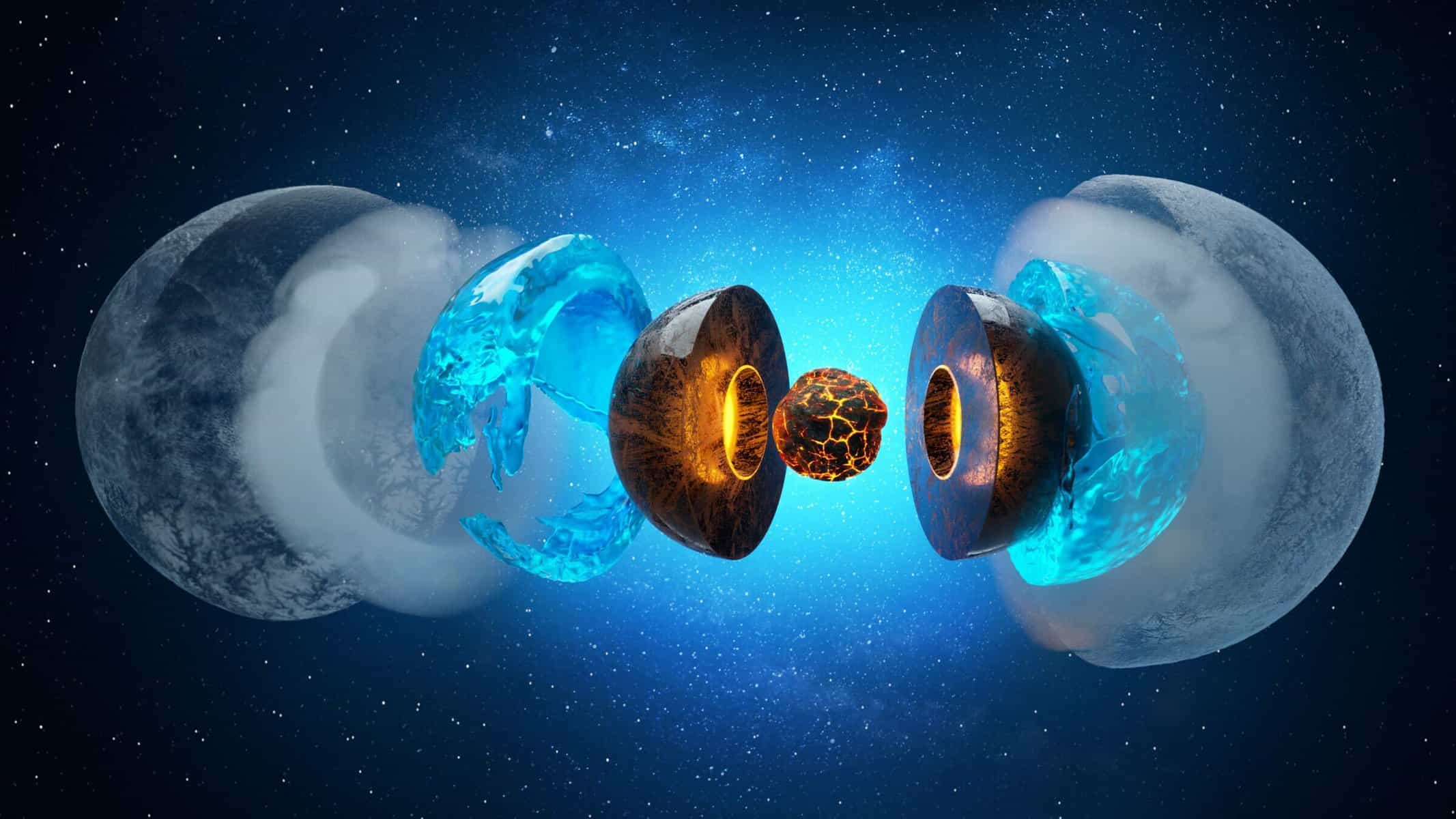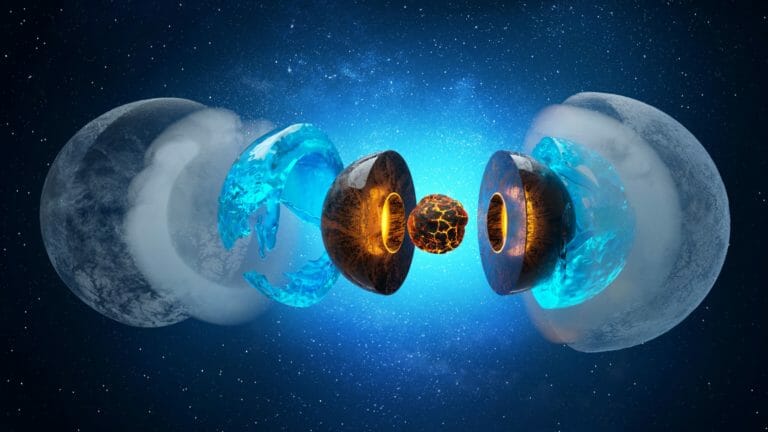Illustration: The discovery of superionic ice potentially solves the puzzle of what giant icy planets like Uranus and Neptune are made of. They’re now thought to have gaseous, mixed-chemical outer shells, a liquid layer of ionized water below that, a solid layer of superionic ice comprising the bulk of their interiors, and rocky centers. @iammoteh/Quanta Magazine
Recently at the Laboratory for Laser Energetics in Brighton, New York, one of the world’s most powerful lasers blasted a droplet of water, creating a shock wave that raised the water’s pressure to millions of atmospheres and its temperature to thousands of degrees. X-rays that beamed through the droplet in the same fraction of a second offered humanity’s first glimpse of water under those extreme conditions.
The x-rays revealed that the water inside the shock wave didn’t become a superheated liquid or gas. Paradoxically—but just as physicists squinting at screens in an adjacent room had expected—the atoms froze solid, forming crystalline ice.
“You hear the shot,” said Marius Millot of Lawrence Livermore National Laboratory in California, and “right away you see that something interesting was happening.” Millot co-led the experiment with Federica Coppari, also of Lawrence Livermore.
The findings, published this week in Nature, confirm the existence of “superionic ice,” a new phase of water with bizarre properties. Unlike the familiar ice found in your freezer or at the north pole, superionic ice is black and hot. A cube of it would weigh four times as much as a normal one. It was first theoretically predicted more than 30 years ago, and although it has never been seen until now, scientists think it might be among the most abundant forms of water in the universe.
Across the solar system, at least, more water probably exists as superionic ice—filling the interiors of Uranus and Neptune—than in any other phase, including the liquid form sloshing in oceans on Earth, Europa and Enceladus. The discovery of superionic ice potentially solves decades-old puzzles about the composition of these “ice giant” worlds.
Including the hexagonal arrangement of water molecules found in common ice, known as “ice Ih,” scientists had already discovered a bewildering 18 architectures of ice crystal. After ice I, which comes in two forms, Ih and Ic, the rest are numbered II through XVII in order of their discovery. (Yes, there is an ice IX, but it exists only under contrived conditions, unlike the fictional doomsday substance in […]
Full article: A Bizarre Form of Water May Exist All Over the Universe



